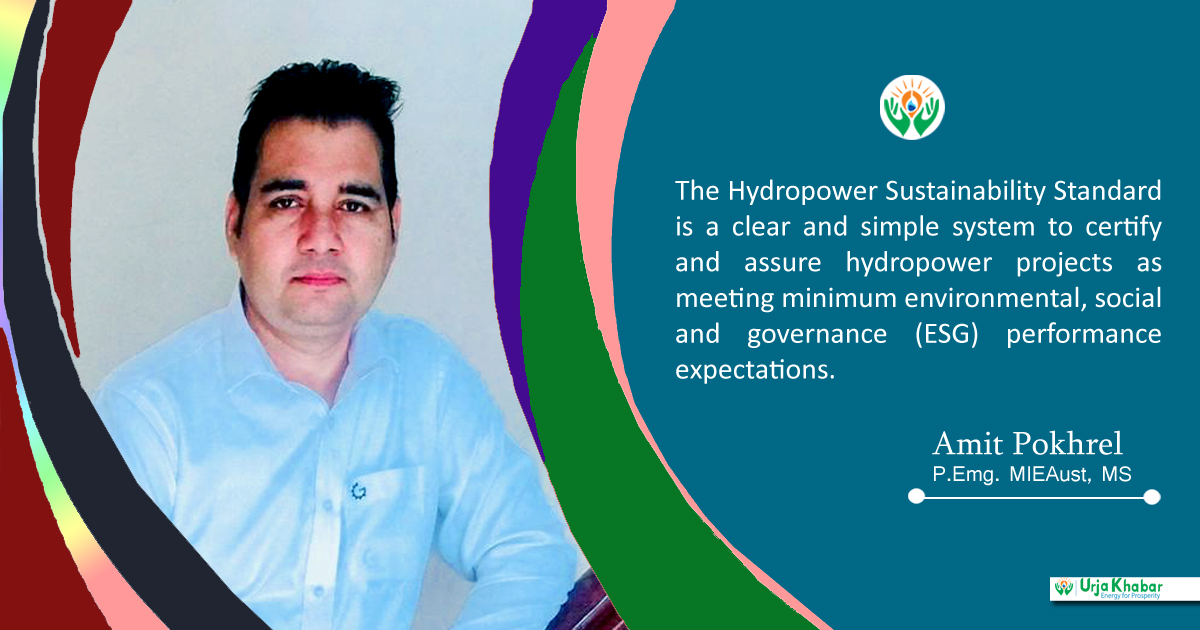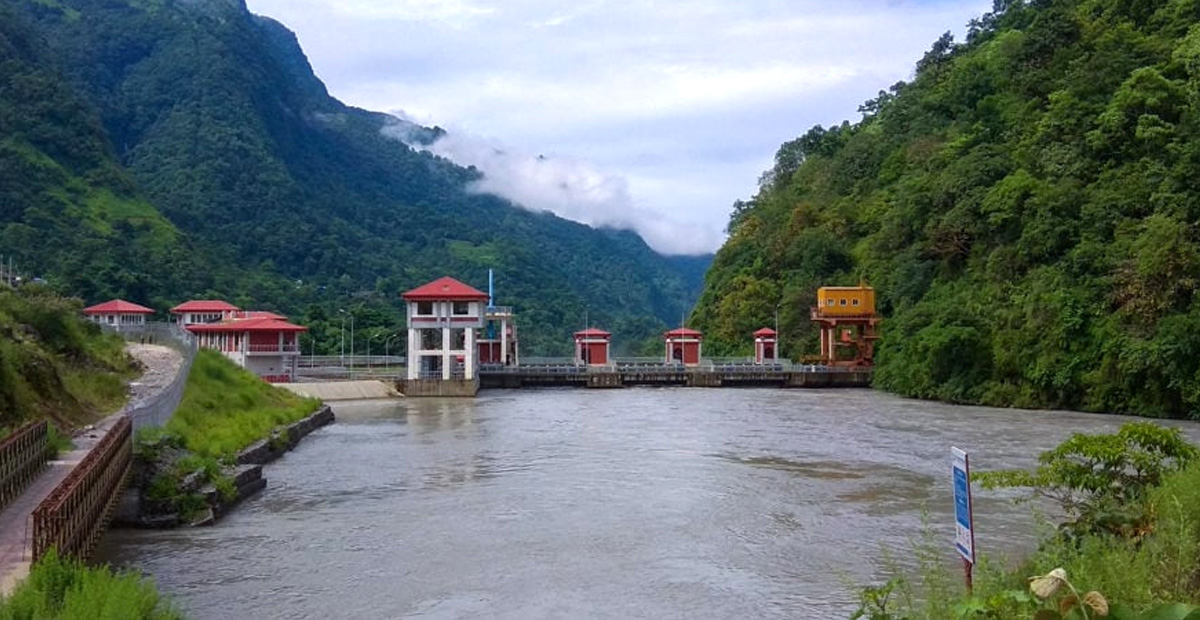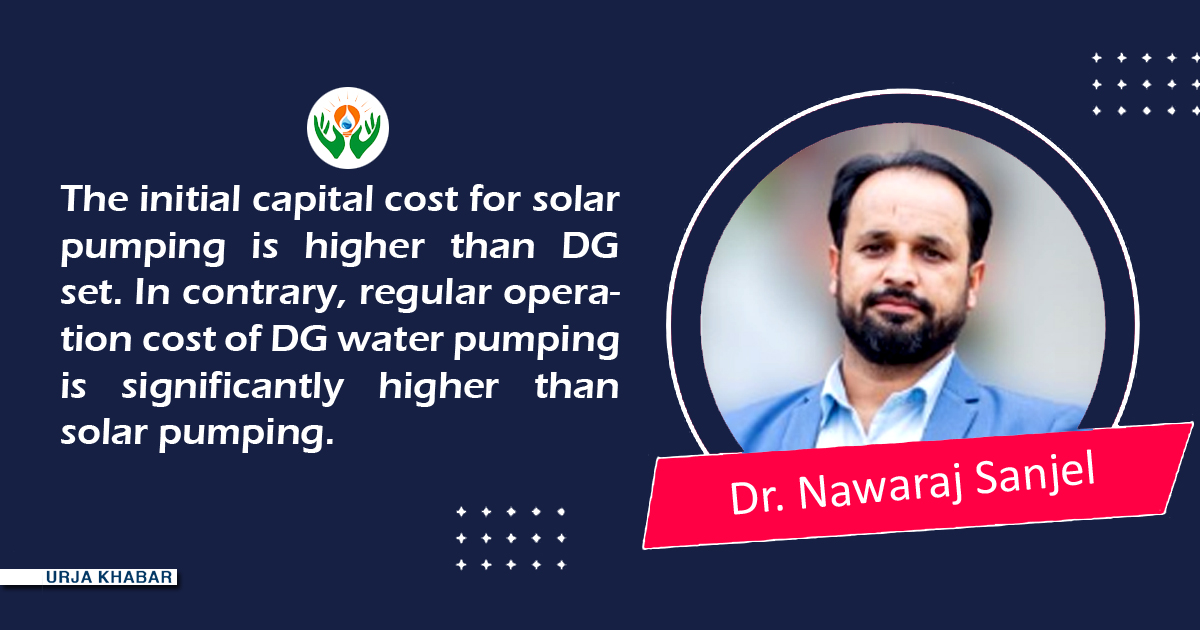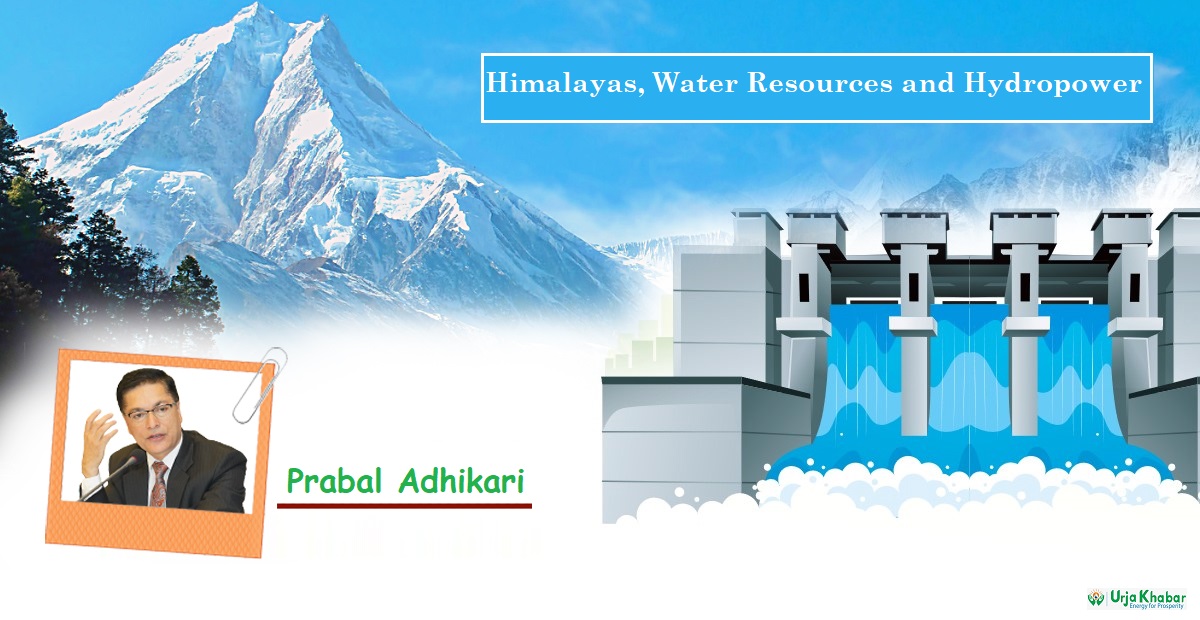Energy Update
Sustainability Standard: An Overview of Opportunities and Implementation of ESG in Nepal

Hydropower plays a vital role in Nepal’s energy system, and as the country’s economy rapidly grows, power demand will also rise. In order to reach net zero targets and protect the country’s environment, it is important that all new sources of electricity should be developed and operated sustainably. Environmental, Social and Governance (ESG) investing has grown rapidly, and the amount of professionally managed portfolios that have integrated key elements of ESG assessments. The growing investor interest in ESG factors reflects the view that environmental, social and corporate governance issues including risks and opportunities can affect the long-term performance of issuers and should therefore be given appropriate consideration in investment decisions. While definitions differ regarding the form of consideration of ESG risks.
In broader sense, ESG investing is an approach that seeks to incorporate environmental, social and governance factors into asset allocation and risk decisions so as to generate sustainable, long-term financial returns. Thus, the extent to which the ESG approach incorporates forward-looking financially-material information into expectations of returns and risks. And it also can help generate superior long-term returns. Over the past several years, considerable attention has been given to ESG criteria and investing, due in part to at least three factors. First, recent industry and academic studies suggest that ESG investing can help improve risk management and lead to returns that are not inferior to returns from traditional financial investments. Despite the recent studies there is a growing awareness of the complexity of measuring ESG performances.

Second, growing societal attention to the risks from climate change. The benefits of globally-accepted standards of responsible business conduct, the need for diversity in the workplace and on boards. Societal values will increasingly influence investor and consumer choices may increasingly impact corporate performance. Third, there is growing momentum for corporations and financial institutions to move away from short-term perspectives of risks and returns. So, as better reflect long-term sustainability in investment performance.
In this manner, some investors seek to enhance the sustainability of long-term returns, and others may wish to incorporate more formalized alignment with societal values. In either case, there is growing evidence that the sustainability of finance must incorporate broader external factors to maximize returns and profits over the long-term, while reducing the propensity for controversies that erode stakeholder trust. ESG investing has also recently garnered interest from the public sector, including central banks that have expressed support for ways to help transitional financial systems toward “greener” and low-carbon economies.

The founder of Biz Bell, Sushil Pokharel, expressed his conviction that the implementation of international standards for the sustainable development of hydropower in Nepal will open up investment possibilities. Additionally, he emphasized the importance of improving the lives of the local population through sustainable development of hydropower.
In addition, forms of sustainable finance have grown rapidly in recent years, as a growing number of institutional investors and funds incorporate various Environmental, Social and Governance (ESG) investing approaches. While the mainstreaming of forms of sustainable finance is a welcome development, the terminology and practices associated with ESG investing vary considerably. One reason for this is that ESG investing has evolved from socially responsible investment philosophies into a distinct form of responsible investing. While earlier approaches used exclusionary screening and value judgments to shape their investment decisions. ESG investing has been spurred by shifts in demand from across the finance ecosystem, driven by both the search for better long-term financial value, and a pursuit of better alignment with values.
In contrast, this is a crucial time for the Nepalese hydropower sector, and we hope ESG can help bring long-term benefits not only to local communities affected by these projects but also to the wider Nepalese society. The hydropower sector needs a credible, transparent certification scheme that will incentivize the best projects. This will give communities, governments and investors greater confidence about their net benefits. This will also help to reduce the impacts on the local environment.
As we know Nepal is also a part of the UN Framework on Climate Change. Nepal has ratified the conventions related to climate change and working on drastic measures to make sure we have enough energy in the future. However, traditional fuels and commercial fuels used in Nepal has negative impact on the environment. As a result, nations around the world are investing in renewable sources of energy, such as hydropower, solar energy, wind power, and hydrogen.
In 2016, pursuant to Article 3 of the Paris Agreement, Nepal made Nationally Determined Contribution (NDC) commitments encouraging the use of renewable sources of energy and enhancing climate change adaptation. However, the past seven years have witnessed no commendable endeavors from the state to foster resilience to climate change as per the purpose of the UNFCC and the Paris Agreement.
Irrespective of the actual path of climate change, the decisions being made by corporations and financial intermediaries indicates that climate transition and physical risks will increasingly affect the financial sector and warrant inclusion in the assessment of financial stability. The Hydropower Sustainability Standard is a clear and simple system to assure hydropower projects as meeting minimum environmental, social and governance (ESG) performance expectations. It will address any confusion about whether a new hydropower project is sustainable and will, crucially, help to unblock green investment and licensing decisions.
Fighting climate change is the only way to preserve the planet we live on. This requires industry to take many, sometimes difficult, steps towards this goal. This is an important step to raise the Environmental and Social (E&S) awareness and practices that are applied to the development of hydro power projects on wide scale. Over the next 10 years, Nepal has ambitions to realize 15,000 MW of hydropower projects. Most of this new clean energy is intended for export to Nepal’s neighboring countries India and Bangladesh, and so presents a potentially long term, stable source of income for the country. Together with 15,000 MW worth of hydro projects, large investments will need to be made in the (cross-border) transmission system of Nepal to export energy to the load centers.
FDI however demands Nepal’s hydropower and banking sector to implement best industry practices with regard to E&S standards. To reach Nepal’s ‘15,000 MW in 2030’ goal, it is very important to prepare the sector for international requirements and align on best practices in E&S standards. By promoting projects with robust environmental and social benchmarks and collaborating with stakeholders, IFC's Nepal Environmental and Social (E&S) Hydropower Program (2016-2023) helped ramp up the capacity of the hydropower sector.
With over 83,000 MW of hydroelectric potential, Nepal is well positioned to transition towards a greener resilient and inclusive development model. Nepal is also helping its neighbors meet their climate goals through export of surplus power. Recognizing this potential, in 2018, IFC supported the Ministry of Forests and Environment to develop a Hydropower Environmental Impact Assessment (EIA) Manual to align Nepal with international policies and practices along with innovative approaches in line with its climate goals. In 2018, IFC supported the development of the Environmental and Social Risk Management Guideline under Nepal Rastra Bank's leadership. IFC has made mandatory for all loan disbursements from commercial, development, and microfinance banking institutions that should include climate risks by updating 2022. This has resulted in banks ensuring compliance with standards addressing environmental and social risks linked to hydropower projects. IFC also conducted a basin-wide cumulative impact assessment and management plan of the Trishuli River Basin to analyze the total environmental and social risks of multiple hydropower projects, including IFC's flagship 216 MW Upper Trishuli-1 hydropower projects.
The negative impact of hydropower companies is cushioned frequently through compensation that is proportional neither to the needs of communities nor to the energy business. Considering the dependence of hydropower on the environment, it is unclear how the good living of communities can be combined with the long-term sustainability of power companies. Economic development fueled by the industrial revolution boosted business productivity, but also resulted in major environmental and social problems.
In fact, sustainable hydropower is a renewable source of energy which will play a crucial role in achieving global climate and development goals. Hydropower currently generates 16% of the world’s electricity through greater visibility and ongoing development, sustainable hydropower can make a significant contribution to the global renewable energy market. As an established technology, sustainable hydropower provides flexible storage and grid services at scale to support the accelerated growth needed in the renewable energy market, alongside wind and solar energy sources. In achieving global net zero goals, sustainable hydropower can be a viable contributor.
In addition, the Hydropower Sustainability Standard is a global certification scheme, outlining sustainability expectations for hydropower projects around the world (IHA). Hydropower has a key role to play in our clean energy transition. The Standard helps ensure hydropower projects provide net benefits to the local communities and environments they interact with. The Hydropower Sustainability Standard certification is the driving mechanism to achieve the vision of making sustainable hydropower the norm and the only global certification scheme to accredit projects for sustainability practices (IHA). Organizations can certify their projects sustainability performance by meeting the minimum sustainability expectations across a comprehensive range of topics using up-to-date and sector specific sustainability guidance.
Moreover, hydropower provides an opportunity to generate significant revenue from exports to neighbouring countries. In addition, the hydropower industry directly employs around 2 million people worldwide, and many more in connected supply chains (IRENA). Hydropower provides very low-cost electricity over its long lifetime, despite relatively high upfront construction costs.
According to the UN Global Compact “Corporate sustainability starts with a company’s value system and a principles-based approach to doing business. This means operating in ways that, at a minimum, meet fundamental responsibilities in the areas of human rights, labour, environment and anti-corruption. Responsible businesses enact the same values and principles wherever they have a presence and know that good practices in one area do not offset harm in another. Aligned with these principles, the certification assessment is conducted by independent third-party Accredited Assessors who collects objective evidence from a variety of sources to provide an unbiased and evidence-based evaluation of a project’s sustainability performance according to the performance requirements of the Hydropower Sustainability Standard.
A project’s strengths and opportunities for improvement are assessed across a range of sustainability topics including, climate change mitigation and resilience, communications and consultation, governance and procurement, water quality and sediments, environmental and social assessment and management.
Subsequently, sustainable hydropower supports the achievement of the United Nations Agenda for Sustainable Development along with the Paris Agreement on Climate change. The Seventeen Sustainable Development Goals were adopted by all member of United Nations and provide a blueprint of priorities for national, governments, multilateral organizations, business developers and civil society.
When responsible engaged, developed and operated, the hydropower projects can directly support the achievement of Sustainable Development Goals 6, 7, 9 and 13 which comprises of ensuring availability and sustainable management of water for all, providing access to affordable, reliable, sustainable and modern energy for all including upgrading infrastructure with clean, environmentally sound technologies and taking action to combat climate change and its impacts.
Indeed, the hydropower projects of all sizes can result in net-benefits to communities and the environment if provided they have a strategic fit in a river basin and are responsibly developed and operated. The Hydropower Sustainability tools exist to ensure that projects can be developed and operated in accordance with good practice. The guidelines and assessment tools cover 26 environmental, social and governance performance criteria where hydropower developer needs to understand and apply them for the sustainable growth.
References:
1. ESG Investing: Practices, Progress and Challenges (oecd.org)
2. Investment governance and the integration of environmental, social and governance factors (oecd.org)
3. ESG reporting ENG.pdf (undp.org)
4. Embracing ESG Reporting | New Business Age | Leading English Monthly Business Magazine of Nepal
5. Integrating ESG factors – A key to strengthening the financial system – Nepal Economic Forum
6. Nepal's Social Factors ESG | Data | on World Economics
The Author works as a Senior Contract and Project Expert in the Energy Business of Golyan Group.
Conversation
- Info. Dept. Reg. No. : 254/073/74
- Telephone : +977-1-5321303
- Email : [email protected]














